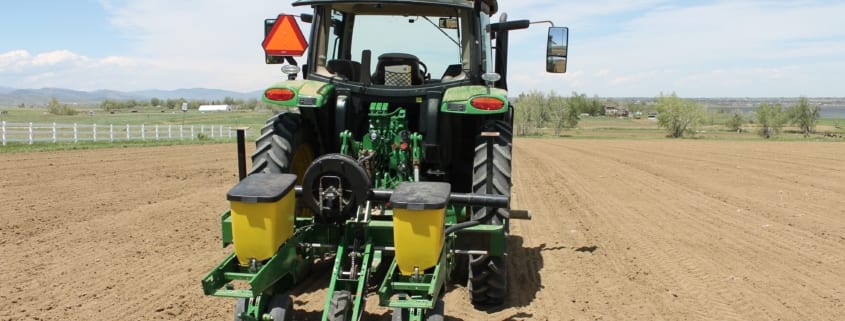Thinking of growing hemp on your farm? The popular crop can be highly lucrative, but only if farmers do their homework. Part of the planning process will require you to determine your hemp equipment needs. While buying new hemp farming equipment can represent a significant investment, the right equipment can also save you loads of time and effort and help you harvest a better quality crop.
In this article, we’ll take a look at all the industrial hemp equipment you’ll need during the tilling, planting, irrigation, harvesting, and processing phases of CBD and CBG hemp cultivation.
What Equipment Do You Need to Grow Hemp?
The answer to this question is a little more complicated than it might seem on the surface. Firstly, the legalization of hemp in the United States is still a relatively new situation. While the crop has shown a lot of promise regarding profitability, most farm equipment companies have yet to bring hemp farming equipment to market. That seems to be changing. Kennco, in particular, is actively marketing some of its existing equipment models to hemp farmers, and farmers may have more hemp-specific equipment to choose from in the near future.
Secondly, the best equipment for your farm will depend on what crop you intend to pursue. Hemp is typically grown for fiber, seed, or cannabinoids, like CBD or CBG. The equipment you need to grow and harvest hemp for fiber differs from the equipment you need for CBD or CBG hemp (and again, we’re focusing on what you need for the latter).
Finally, many farmers may be wondering if they can repurpose their current equipment to use on hemp. Happily, the answer is yes in many instances. Farmers who previously grew wheat, corn, tomatoes, or many other cash crops should be able to use or customize some of their existing equipment to assist with their new hemp crop.
Hemp Tilling Equipment
The way you prepare your soil will play a big role in the ultimate success of your hemp crop. Farmers looking to grow hemp for CBD need to give their plants a good amount of space, so that they have enough nutrients and energy to produce potent buds. This means broadcasting seeds is off the menu. Instead, farmers should prepare raised beds and plan for roughly 1,600 plants per acre.
Hemp farmers planting a large number of acres would do well to invest in an industrial raised bed shaper, a piece of equipment that can efficiently produce tight and even beds. Farmers who grow tomatoes are likely to already have an industrial raised bed shaper and can repurpose this equipment for hemp.
The next piece of industrial hemp equipment farmers should consider is a plastic mulch layer, which puts down strips of stretched plastic along farm rows. (It can also remove previous sheets of plastic.) This handy tractor attachment helps farmers conserve water, maintain a more consistent soil temperature, and control for weeds.
Hemp Planting Equipment
The equipment you use for planting your hemp will depend on whether you plant seeds directly into the soil or use starts or clones instead. Based on our experience, we usually recommend that our clients begin seeds in a greenhouse or purchase starts instead of planting seeds directly in the field. Seeds are more likely to germinate in a greenhouse and grow a strong taproot, which will give them a better shot of survival in the field.
However, if you choose to directly seed your fields, then a seed drill will make the process quicker and more efficient. Seed drills will place seeds at the correct depth in the soil and cover the seeds, protecting them from weather and hungry critters.
For farmers interested in using starts or clones into the field, the best hemp planting machine is a transplanter. A good transplanter will plant your starts nice and straight and maintain the proper distance between plantings to give your shoots the space they need to grow. The right transplanter will also handle your young plants delicately so as not to cause trauma during the planting.
Hemp Irrigation Equipment
Hemp is known for being a less thirsty plant than cotton and many other cash crops, but it still needs around 30 inches of rainfall during its growing season. That means most farmers will need to install an irrigation system. Fortunately, hemp does well with many of the most popular irrigation systems that farmers already use, including pivot irrigation, micro sprinklers, and drip irrigation.
Many farmers who plan on transitioning to hemp from another crop will already own a pivot irrigation system. This type of irrigation can certainly be used on hemp, though the exact water levels will depend on the farmer’s region and climate.
However, we encourage new farmers with no existing irrigation structure to consider investing in a drip irrigation system. Also known as “micro irrigation,” drip irrigation applies water directly to the root zones of plants using applicators placed on or below the surface of the ground. These applicators are often porous tubing, perforated pipes, or lines of drip tape connected through a PVC main pipe.
Drip irrigation requires far less water than more traditional irrigation methods, which can be helpful to farmers in parts of the country where water is both scarce and expensive. Drip irrigation also ensures that water gets right to the roots of the hemp plant, reducing the chance of weeds or mildew on leaves.
Hemp Harvesting Equipment
Perhaps more than any other stage of the hemp growing process, finding the right hemp harvesting equipment has been a puzzle for many farmers. Hemp is a tough, fibrous plant that is becoming infamous for defeating many traditional harvest machines. It can become wrapped in machines with rotation or ball up under a disc mower.
Additionally, farmers need to decide whether they want to harvest hemp for biomass or harvest for hemp flower before determining which equipment is ideal. Hemp biomass will result in less concentrated CBD or CBG, but it is far easier and less labor-intensive to harvest than hemp flowers. Large-scale hemp farms tend to harvest hemp biomass, while many smaller-scale boutique farms focus on hemp flowers.
Farmers looking to harvest hemp biomass would do best to invest in a CBD-specific hemp harvester. These machines are newly on the market and are designed to carefully cut each hemp plant and place them on a trailer. The gentleness is key, because a traditional harvester or combine can easily damage the delicate flowers of the plant where the majority of the cannabinoids, terpenes, and resins reside.
For smaller-scale farms looking to harvest hemp flowers, there is only one piece of equipment currently available to help with the harvest: human hands. That’s right, hemp bud farmers typically recruit labor to hand-cut buds from the hemp plant in order not to damage or contaminate the flower.
Hemp Processing Equipment
After the hemp biomass is harvested, it must be processed in order to extract the cannabinoids and other chemical compounds clients want. This can be done through three different methods: solvent extraction, CO2 extraction, or steam distillation.
CO2 extraction is the safest and most efficient processing method, but it also requires expensive and specialized equipment. Steam distillation is more cost-effective but much less efficient than CO2 extraction, meaning farmers won’t get the most from their hemp biomass. Solvent extraction is an interesting middle ground, cheaper than CO2 extraction but more efficient than steam extraction. However, it has drawbacks of its own, particularly the risk of leaving behind residual solvents, which can affect the purity of the end product.
Many hemp farmers choose to ship their hemp biomass to a processing facility rather than invest in expensive and complicated equipment. Some larger-scale farmers prefer to rent equipment from processers, while some of the largest farms do buy their own equipment and process their own hemp biomass.
Want to Know More About Farm Equipment Needed to Grow Hemp?
Determining the right equipment needed to farm hemp isn’t a black and white issue. If you are just starting to grow hemp on a couple of acres, you probably don’t need to invest in state-of-the-art equipment. If you are transitioning your fields, you can likely repurpose or retrofit some of your existing equipment to use on your hemp.
A lot comes down to your goals, the size of your hemp acreage, the equipment you already have, and your budget for new equipment. If you still aren’t sure what industrial hemp equipment is right for you, then it’s a good idea to consult with an agronomist with experience in the CBD or CBG hemp space. You may also want to consider working with a farm equipment consultant.
Finally, hemp farming equipment can only take you so far. Make sure you start your hemp operation right with the best quality hemp seeds.



